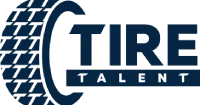(843) 732-8473 | [email protected]

Beyond the Numbers: Why Real Success in Recruitment Isn’t Measured by Traditional Metrics
By Mike Cioffi
Recruitment metrics are essential for assessing how well your hiring processes are working, from sourcing to onboarding. Traditionally, we’ve relied on things like time-to-fill, which tracks how fast we can fill a position, and cost-per-hire, which gives an idea of the financial investment involved in recruiting each new team member. Then, there are candidate experience scores and offer acceptance rates, which help track how attractive your company is to job seekers. And, of course, we’ve got quality of hire, which attempts to measure the long-term fit and performance of new hires.
These metrics are commonly reported to ensure that hiring is efficient, the budget stays on track, and the recruitment strategy aligns with business goals. But as the job market continues to evolve, there’s a growing need to look beyond these numbers. The reality is, things like talent expectations, industry competition, and global events can quickly shift what success truly looks like.
The issue is that traditional metrics often miss the mark. Time-to-fill and placement success rates, for example, can be misleading. These numbers, while standard in recruitment, don’t account for the external factors at play—things like client-side decisions, changes in job priorities, and evolving workplace dynamics, especially after the chaos caused by COVID-19 pandemic.
Take client decisions, for example. I’ve seen clients cancel roles, freeze searches, or make last-minute shifts that can throw off recruitment metrics. Here's a real-world example: A client in the manufacturing industry recently froze their search for a VP of Commercial. So, do we count that as an unfilled position or just exclude it entirely since the role was put on hold? This kind of situation shows why we need flexible metrics that can adapt to these changes, reflecting the recruiter’s effort without being clouded by uncontrollable client decisions.
This leads us to time-to-fill, which is heavily impacted by factors beyond the recruiter’s control—like a sudden hiring freeze, shifting job requirements, or even key decision-makers being unavailable around major tradeshow events. When leaders aren’t available for interviews, recruitment can slow down, making it unrealistic to hold recruiters accountable for how long the process takes.
Then there’s the issue with placement success rates. A 95% success rate sounds impressive at first, but it’s important to question how sustainable that is when clients frequently cancel roles or change their priorities mid-search. Industries with high turnover or companies that rely on contingent or temp placements make this metric even more complicated, creating a disconnect between what these numbers say and what recruiters actually experience.
Companies that quickly hire and fire people can make metrics like retained searches or 100% fill rates seem unreliable. When you hear about a company claiming a perfect retention rate on a search, that can be misleading. Sometimes, these hires are based on board referrals, and the candidate they choose isn’t always the one the recruiter recommended. Metrics like these can create a false picture of success, especially in high-stakes searches like CEO placements, where companies might pay a lot for a search but not actually hire the person recommended. To truly understand recruitment success, companies need to adapt their metrics to reflect both hiring trends and a commitment to long-term retention.
Some companies also offer services like a 12-month guarantee, which provides post-placement support under certain terms. But not everyone gets this guarantee, and it comes at an additional cost. One thing I’ve learned over the years is that no two industries—or even companies—are exactly alike. This means there’s no universal blueprint for recruitment metrics. The right metrics need to align with a company’s unique culture, goals, and values because, at the end of the day, that's what drives the retention of top talent. While vetting and assessments are vital for ensuring a good fit, it’s a company’s leadership and culture that truly hold the key to long-term employee retention.
For my team, we don’t just chase numbers. We put real focus into each role. For example, we track key metrics like “first submittal within seven days” and the “recruiter-to-role ratio,” which give us insight into our internal efficiency and the level of dedication we bring to every role. These help us ensure we're staying on track and truly prioritizing our client’s needs.
But here’s the thing: recruitment success isn’t about bragging rights with flawless stats. It's about fostering genuine relationships with clients, truly understanding their company culture, and making sure hires are aligned with their long-term goals. Metrics can give insight, but they should never be the sole measure of success. This is about the quality of the work, not just the quantity, and it’s this approach that leads to lasting results.
So, what should companies focus on to improve recruitment? Here are a few tips:
Alignment over volume – Focus on how well new hires fit within your company culture and how they contribute to long-term goals, not just how fast you can fill a role.
Candidate experience – A positive candidate experience is key. It’s not just about the hire, but about the journey. Make sure to keep candidates informed, valued, and engaged throughout the process.
Internal metrics that matter – Track things like time-to-interview, first submittal within 7 days, and recruiter-to-role ratios to measure efficiency. But remember, these metrics should work for you—not define you.
Retention-focused hiring – While filling a role is important, the long-term success of that hire is what truly matters. Implement strategies that focus on onboarding, career growth, and employee satisfaction to keep retention high.
At the end of the day, recruitment is about more than filling seats. It’s about building teams that thrive, aligning with your company's vision, and seeing that vision come to life with the right people. When we focus on quality, commitment, and long-term success, that’s when recruitment truly delivers lasting value.
Mike Cioffi is the founder of Tire Talent, a boutique recruiting agency dedicated to our industry. This article was originally published on Talent Traction. You can reach him directly: [email protected] if you have any questions about this article.
US Labor Market Bounces Back: What November’s Job Gains Mean for Employers
It's that time of the month again when we get the latest employment report from the U.S. Bureau of Labor Statistics. The November 2024 Employment Situation Report gives us a look at how the labor market is holding up, showing a mix of progress and ongoing challenges. While the unemployment rate has remained relatively steady, there are still some areas of concern, like the higher unemployment rate compared to last year and the number of people facing long-term unemployment. On the positive side, sectors like healthcare, leisure, and government continue to show strong growth, even though retail trade is struggling. Wages are on the rise, and we’re seeing slight increases in the average workweek too.
Here are some takeaways from the report:
Job Growth and Unemployment
The economy added 227,000 jobs in November, following a modest increase of 36,000 in October. This reflects a recovery, with the average monthly gain over the past year being 186,000.
The unemployment rate remained steady at 4.2%. While this is a slight increase from last November (3.7%), it remains a sign of a relatively stable labor market.
The number of unemployed people reached 7.1 million, up from 6.3 million a year ago, indicating some increase in unemployment over the year.
Sector-Specific Job Growth
Healthcare saw significant growth, adding 54,000 jobs in November. This continues a trend seen over the past 12 months.
Leisure and Hospitality experienced a notable increase, with 53,000 jobs added, primarily in food services and drinking places. The sector has been steadily recovering.
Government jobs increased by 33,000, driven by state-level hiring. This growth is consistent with the sector's average monthly gain of 41,000 jobs over the past year.
Manufacturing - Employment in transportation equipment manufacturing rose by 32,000 jobs, largely due to the return of workers who had been on strike.
Retail lost 28,000 jobs, with general merchandise retailers, in particular, seeing declines. However, there were some gains in electronics and appliance retail.
Wages and Workweek
Wages for private-sector employees rose by 0.4% to $35.61 per hour, with a year-over-year increase of 4.0%. The average workweek for all private nonfarm employees increased slightly by 0.1 hour to 34.3 hours. Manufacturing workweek hours were stable, but overtime hours saw a slight uptick.
Other Notable Trends
The number of long-term unemployed (those jobless for 27 weeks or more) remained at 1.7 million, up from 1.2 million a year ago. Long-term unemployment now accounts for 23.2% of all unemployed individuals.
The participation rate held steady at 62.5%, remaining within a narrow range since late 2023.
The number of individuals working part-time for economic reasons (those who would prefer full-time work but can't find it) remained at 4.5 million, which is higher than the 4.0 million reported last year.
For leaders in various industries, this report signals a need to adapt hiring strategies while navigating challenges in areas like long-term unemployment. Additionally, with rising wages and a slight increase in the workweek, employers may need to offer competitive compensation and flexible work options to attract and retain talent.
Empowering Careers, Connecting Talent
Your Trusted Partner for Top-Tier Recruitment Solutions
© 2025 Tire Talent. Powered by Talent Traction. All Rights Reserved.

